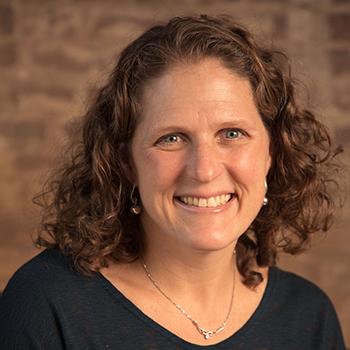Voinovich School evaluates tool to aid in placement of foster children
On any given day, Ohio has over 12,500 children in foster care, and new children are entering the system all the time. 9,875 children entered the Ohio foster care system in 2013 alone. Given what most of these kids have been through — abuse, neglect, parental drug abuse — providing a stable, comfortable foster home is a priority.
“Kids should be in the least restrictive setting,” Dr. Lesli Johnson, Voinovich School associate professor, said. “They should be in the setting where they get their needs met and that’s most like being in a family setting.”
Unfortunately, that is easier said than done. In a 2014 report to Congress [PDF], the U.S. Department of Health and Human Services found that nearly 11 percent of children in Ohio’s foster care system in 2012 had three or more placements on file. Of those, about one-third had been in foster care for less than two years.
To improve its track record, the state is seeking an evidence-based approach to placing children and is funding evaluations of various placement tools to find the best options. In 2015, Johnson and Dr. Anirudh Ruhil, Voinovich School associate professor, received a two-year grant from the Ohio Department of Job and Family Services (ODJFS) to evaluate the Child and Adolescent Needs Assessment Survey (CANS) tool currently being tested in 11 Ohio counties, including Athens.
Social workers with Child Protective Services use the CANS tool to complete an upfront assessment of each child, which produces a score that determines an appropriate level of care for the child, ideally minimizing placement disruptions.
Roughly one month after a child is placed, a follow-up assessment is completed using the CANS tool to determine the quality of the placement. The survey, completed by CPS workers or those involved at a placement site, asks questions concerning (but not limited to) the child’s performance in school, the child’s behavior and recent trauma history.
The Voinovich School’s evaluation of the CANS tool considers placement stability, length of stay, appropriateness of placement and costs.
If the evaluation of the pilot program indicates that the CANS tool is effective, Johnson said there would likely be state-government interest in expanding the use of the tool and further evaluating its efficacy. At that point the tool could be compared, in terms of the quality of its results, with other tools used across the state.
Johnson said that she is excited about the evaluation and hopes that, due in part to the Voinovich School’s work, children will soon be able to get the care they need and placed into a home or permanent family situation much more quickly.
The Voinovich School’s evaluation also serves as an applied learning opportunity for second year MPA student Karen Sherman. Sherman serves the project in what she referred to as “a jack-of-all-trades capacity,” attending stakeholder meetings, suggesting edits to participant surveys, researching communication tools and completing other tasks as needed.
“As a public administration student, I'm interested in learning how good ideas are turned into practice,” Sherman said. “This work delves into three topics I like learning about: the steps involved to implement a big idea, how to run a program evaluation to see if these ideas are useful or not, and the unique roles different levels of government and private organizations adopt to carry out a social service mission.”
Sherman said that her biggest take-away from the project has been the importance of patience when conducting this kind of valuable service work. “Implementing new ideas across a small region, let alone a state, or the nation, takes a lot of time and often works in small steps,” Sherman said.


